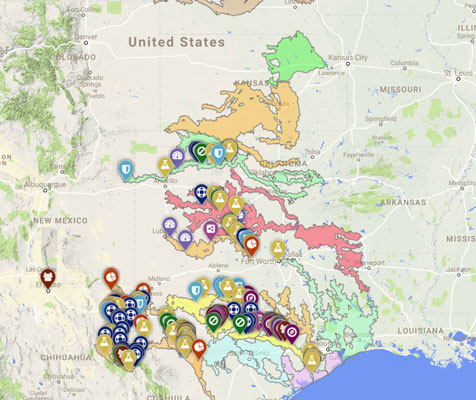Guadalupe River
Conservation PlanConservation action plan and science agenda from stakeholder-led workshops
 Additional conservation action is needed in the Guadalupe River Basin to address historic habitat changes and protect its species-rich flora and fauna including the Guadalupe Bass (Micropterus treculii). Conservation planning was completed in response to ongoing habitat alteration throughout central Texas, especially considering the substantial land fragmentation projected in the coming decades.
Additional conservation action is needed in the Guadalupe River Basin to address historic habitat changes and protect its species-rich flora and fauna including the Guadalupe Bass (Micropterus treculii). Conservation planning was completed in response to ongoing habitat alteration throughout central Texas, especially considering the substantial land fragmentation projected in the coming decades.
This study assessed over 3 million acres of land in the Guadalupe Basin. A story map summarizing the assessment can be viewed here. An initial stakeholder driven, basin-wide conservation planning process using a GIS procedural model was followed by the creation of a 5-year conservation action plan that included 37 specific projects throughout the watershed—see list below. In addition, the stakeholder process integrated governmental interest with those of non-profits and land trusts—making for results that better reflect the many conservation interests throughout the basin.
To direct conservation easement and fee simple acquisition in the coming decade, the top 10% of lands with the highest conservation values were identified and evaluated. The procedural model to determine priorities and stakeholder input included variables associated with water, ecological, and cultural resources, with a strong focus on Guadalupe Bass habitat—a key conservation species in the basin. Other conservation resources included freshwater mussels, flood mitigation lands, lands adjacent to existing open space, ranchlands, areas threatened by development, and riparian corridors.
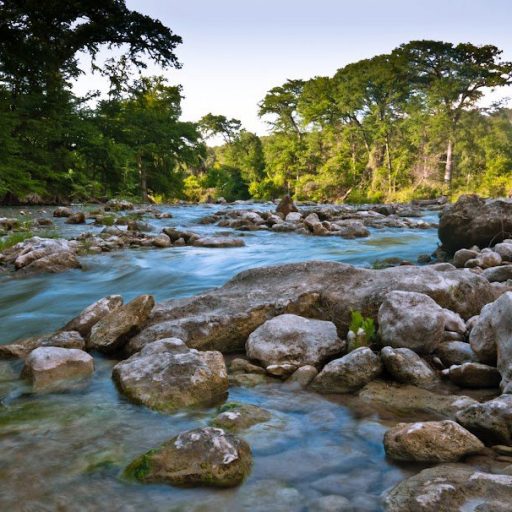
These results are being used to galvanize diverse partnerships with the aim of conserving more land in the study area and catalyzing conservation action. In the coming years, the Meadows Center for Water and the Environment as well as Texas Parks and Wildlife Department will utilize these results to guide resource use in the Basin. Stakeholder meetings that guided the development of the procedural model as well as the conservation agenda have included representatives from TPWD, U.S. Fish and Wildlife Service, Texas State University, Southwest Research Institute, Greater Edwards Aquifer Alliance, City of San Antonio, City of New Braunfels, Comal County Conservation Alliance, Upper Guadalupe River Authority, Edwards Aquifer Authority, Great Springs Project, Guadalupe-Blanco River Authority, and San Antonio bay Partnership.
PROJECT TITLE
A Framework for Conservation in the Guadalupe River: Towards Collaborative Stewardship through Strategic Geographic Prioritization and Stakeholder Coordination
PROJECT PARTNERS
Texas Parks and Wildlife Department (TPWD), Texas State University’s Meadows Center for Water and the Environment, University of Texas at Austin, and Siglo Group
PROJECT OBJECTIVES
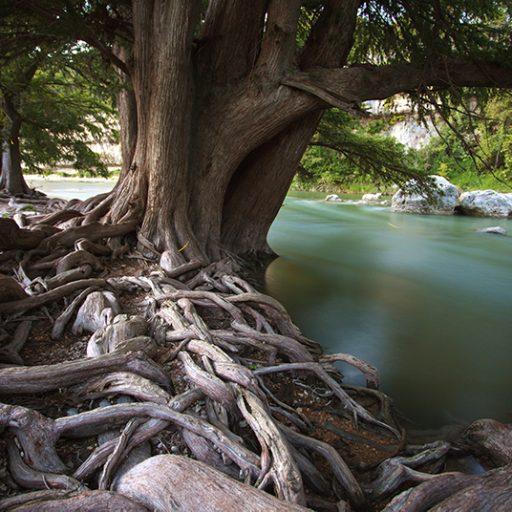
The population of Texas is growing rapidly. This growth is continuing to increase pressure on natural resources that are essential to our ongoing prosperity and are also ecologically and culturally significant. This is particularly true in the Guadalupe River Basin, which contains globally significant biological resources from the headwaters in the Texas Hill Country to its terminus in the San Antonio Bay system and Gulf of Mexico. The Basin is intersected by rapid population growth along the I-35 corridor, fragmentation in its upper reaches, sea level intrusion as it meets the Gulf, and resource extraction and climate extremes throughout. This project recognizes the need for thoughtful conservation strategies that accommodate future growth while determining specific conservation actions, optimal locations, and mechanisms to achieve meaningful conservation delivery in the Basin.
PROJECT TASKS
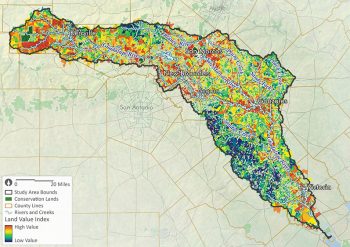
- Identify shared conservation priorities of conservation organizations operating in the Guadalupe River Basin,
- Identify opportunities for incentivizing stewardship and ecological restoration activities in the Basin,
- Prioritize landscapes within the Basin for conservation easement and fee simple purchase acquisition,
- Identify those shared conservation priorities that address the conservation needs of Guadalupe Bass and other Species of Greatest Conservation Need identified in the Texas Conservation Plan (TPWD, 2012),
- Incorporate conservation priorities into the Texas Native Fish Conservation Areas planning framework, and
- Build stakeholder support for delivery of conservation priorities through facilitated engagement.
PROJECT BACKGROUND
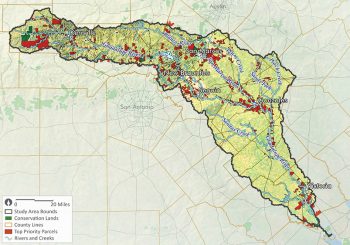
The work is framed within the context of other efforts, including the statewide network of Native Fish Conservation Areas, conservation actions being implemented through the Guadalupe Bass Restoration Initiative, a concurrent study supported by Texas Parks and Wildlife Department examining stream fragmentation and hydrologic alteration in the upper Guadalupe Basin, and other research, conservation planning, and conservation delivery efforts underway in the Basin. The project team will combine two conservation methodologies already used in portions of the Guadalupe River Basin: Strategic Conservation Prioritization and the Native Fish Conservation Areas Planning Framework. Merging the two methodologies allows for data-intensive strategic conservation planning within a stakeholder framework, facilitating the long-term persistence of freshwater fish diversity in the Basin through collaborative stewardship and landscape-scale conservation delivery.
The three-year project will occur in two phases with the first dedicated to conservation assessment and the second dedicated to catalyzing conservation delivery through the creation of an action plan for the Basin. The two phases will be held together through stakeholder coordination and sharing of information to cooperators and the public through the nativefishconservation.org website.
The project team will consist of Texas State University’s Meadows Center for Water and the Environment staff, Emily Warren; Siglo Group staff, Jonathan Ogren, Ben Labay, and Ben Prince; and University of Texas at Austin staff, Gary Garrett.

